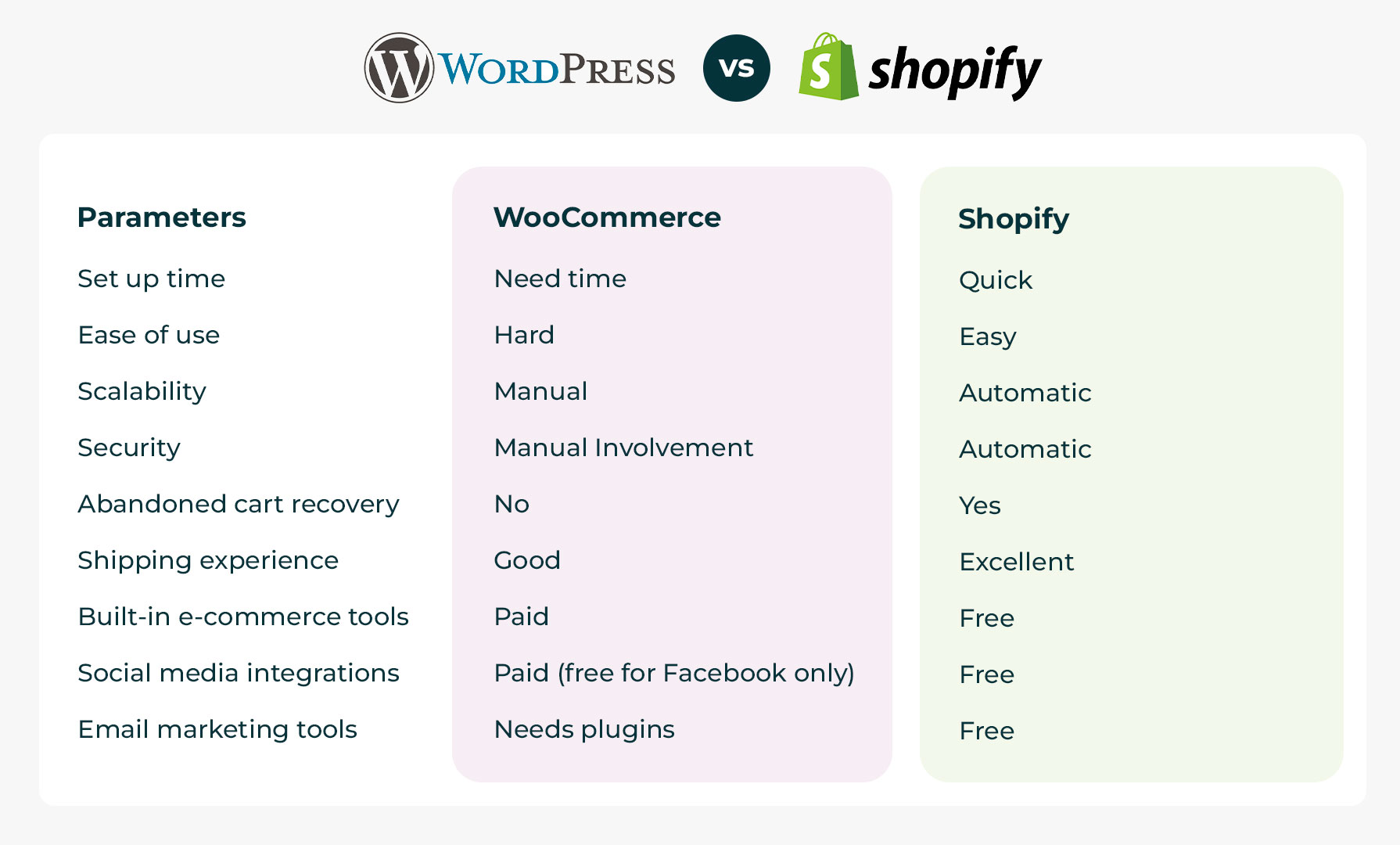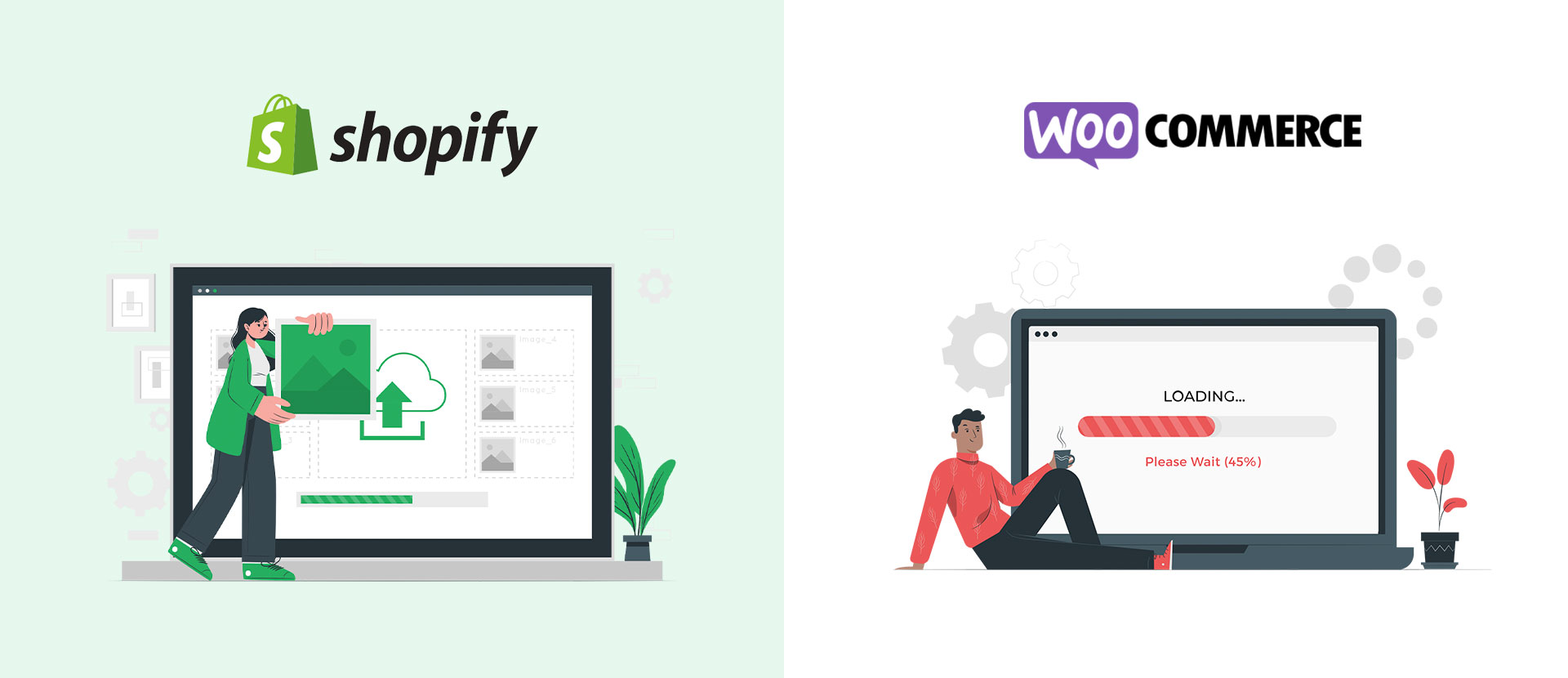WooCommerce and Shopify are two of the most well-liked and powerful eCommerce platforms available to merchants. Using one platform over another may be advantageous depending on the retailer’s demands, necessitating the migration of WooCommerce to Shopify online even more. However, migrating the data could be more tedious than it appears. That’s why it’s essential to chalk out a clear strategy to ensure a seamless transition.
However, before delving into the details of the process, let us first understand the need for migration, data that needs to be migrated, the fundamental differences between Shopify and WooCommerce, and how IT-Geeks can ensure a hassle-free migration for your data.
What Is The Need For Migration?
Migration refers to switching from the existing platform to a more advantageous one that can improve user experience and the working environment. Because of advancements in technology, security issues, a lack of vendor support, excessive costs, and other factors, businesses need to migrate over time.
What Data Needs To Be Migrated?
There is a ton of data in every WooCommerce store. From product and product data to customer information and order information, everything needs to be migrated. The following data needs to be migrated from one platform to another –
- Products: Manufacturer name, Full Description, Meta Title, Meta Description, Product Tags, Images, Stock, and more
- Variants: Quantity, Weight, Price, and more
- Product Categories: Name, Meta Title, Meta Description, Image
- Customers: First & last name, email id
- Billing Address: Company Name, First and last Name, Address 1, 2, Zip Code, City, State, and more.
- Shipping Address: Company Name, First and last Name, Address 1, 2, Zip Code, City, State, and more.
- Orders: Order Date, Products, Status: (Name, SKU, Option), Quantity, Price, Tax Price, Discount Price, Shipping Price, Comments.
- Customer Name, Billing Address, Email: Company Name, First and last Name, Address 1, 2, Zip Code, City, State, and more.
- Shipping Address: Company Name, First and last Name, Address 1, 2, Zip Code, City, State, and more.
- Coupons: Coupon Date, Code, and Expire Date.
- Reviews: Created Date, Comment, Rate.
- CMS Pages: Title, Descriptions.
- Blogs: Title, Full Description.
- Manufacturers: Name
WordPress vs Shopify : A Comparison

For a better understanding of both WooCommerce & Shopify websites, let’s compare both –
| Parameters | WooCommerce | Shopify |
| Set up time | Need time | Quick |
| Ease of use | Hard | Easy |
| Scalability | Manual | Automatic |
| Security | Manual Involvement | Automatic |
| Abandoned cart recovery | No | Yes |
| Shipping experience | Good | Excellent |
| Built-in e-commerce tools | Paid | Free |
| Social media integrations | Paid (free for Facebook only) | Free |
| Email marketing tools | Needs plugins | Free |
Why is Shopify better than WordPress?

Setting up a Shopify store is good as it’s easy to use & its hosting requires less effort compared to WordPress. Here are a few other notable benefits of Shopify –
- It Is Easy To Use For Non-technical Users.
Hosting and security are both included with Shopify. To create a completely functional online store, you are not also required to utilize any code. Shopify has experience managing payments, merchandise, inventory, and other things. Additionally, it offers a seamless drag-drop menu for easy management of everything.
Customizable Themes
Shopify offers more than 70 free and premium themes, which you may choose from based on your preferences and business requirements. Shopify, a platform specifically designed for e-commerce, provides elegant designs to help you sell more effectively. Even better, its themes are simple to modify. WooCommerce also allows for infinite customisation, however doing so requires technical know-how.
No Additional Costs
Shopify comes with several built-in eCommerce capabilities; all you need to do is sign up for its free basic plan to use these features, which will help you sell more effectively. Whereas, when you pick WooCommerce, the majority of Shopify’s regular features may involve a fee.
It Lets You Scale Your Online Store Easily
Your problem, like process handling and streamlining, increases as your business expands. Shopify smoothly handles the relevant technological issues. It automatically takes care of your stores’ upgrades, security enhancements, backups, and other factors. WooCommerce, on the other hand, gets cumbersome when it starts requiring manual adjustments, such as managing increased traffic, upgrading web hosting plans, and more.
Why Migrate To Shopify From WordPress?
Due to its ease of use—even for beginners—high reliability compared to other platforms, Shopify is a superb choice for developing and running eCommerce stores of various sizes. Besides this, here are a few of the most obvious advantages of switching from WooCommerce to Shopify.
Scale With Support
You are no longer required to spend time resolving unforeseen technical problems as Shopify has multiple functionalities & integrations that benefit you in the long run.
Security Features
Shopify offers a complete set of integrated security and domain hosting features. More than 6,000 verified and secure apps can help you develop more.
High Uptime
With a 99.99% uptime rate, Shopify has a very high level of reliability, which is crucial if you want to maintain your store’s availability so that clients may shop whenever they want to.
How To Migrate WooCommerce To A Shopify Website Successfully?
You have two options for importing your products from WooCommerce to Shopify: either manually exporting your data from WooCommerce and importing it into Shopify or using a third-party migration helper programme. Here, we’ll go over both the procedures to set up a Shopify store.
Manual Migration
Manual Data transfer from WooCommerce to Shopify entails exporting your data from WooCommerce and importing it into the Shopify website. You will need to migrate your data manually if you choose this method, which will entail a little more work on your part.
Migration Automation Using a Third-Party App
Several third-party tools are available for Shopify WooCommerce connection to streamline your transfer procedure. You can also look for IT-Geeks Shopify website builder to make your entire migration process smooth.
Step 1: WooCommerce’s Shop Data Export
You must export your data from your WooCommerce store before importing it into your new store.
- Click Tools > Export in the WooCommerce admin
- Choose All content
- Click Download Export File
Step 2: Upload The Data From Your Store To Shopify
- Choose Apps > Store Importer from the Shopify admin menu.
- Choose WooCommerce from the drop-down menu when you get to the “Import your data into Shopify” screen.
- Click “Add file” and select your exported files under “Upload files.”
- Select the downloaded WooCommerce XML file.
- Continue import > Click Import
Step 3: Examine And Edit The Data You Imported.
Review your imported products after you’ve finished the aforementioned steps. Verify that everything appears to be in order and update any outdated information
How Can IT-Geeks Help In Performing The Migration?
As a Shopify expert with a track record of 5000+ completed projects, 300+ successful store migrations, and 2600+ designed stores, IT-Geeks is one of the top migration experts who believe in transparent, elegant, and satisfactory working to provide our clients with the best, most distinctive, and personalized services possible. With the help of our best technical assistance, we help you set up the Shopify store and make your migration process smoother.
We at IT-Geeks have trained and supported millions of businesses to date, helping them with everything from store redesign to migration to Shopify store setup, SEO, speed optimization, and more. Bring your website to the IT-Geeks right away.
Visit: Shopify Experts

Leave a Reply